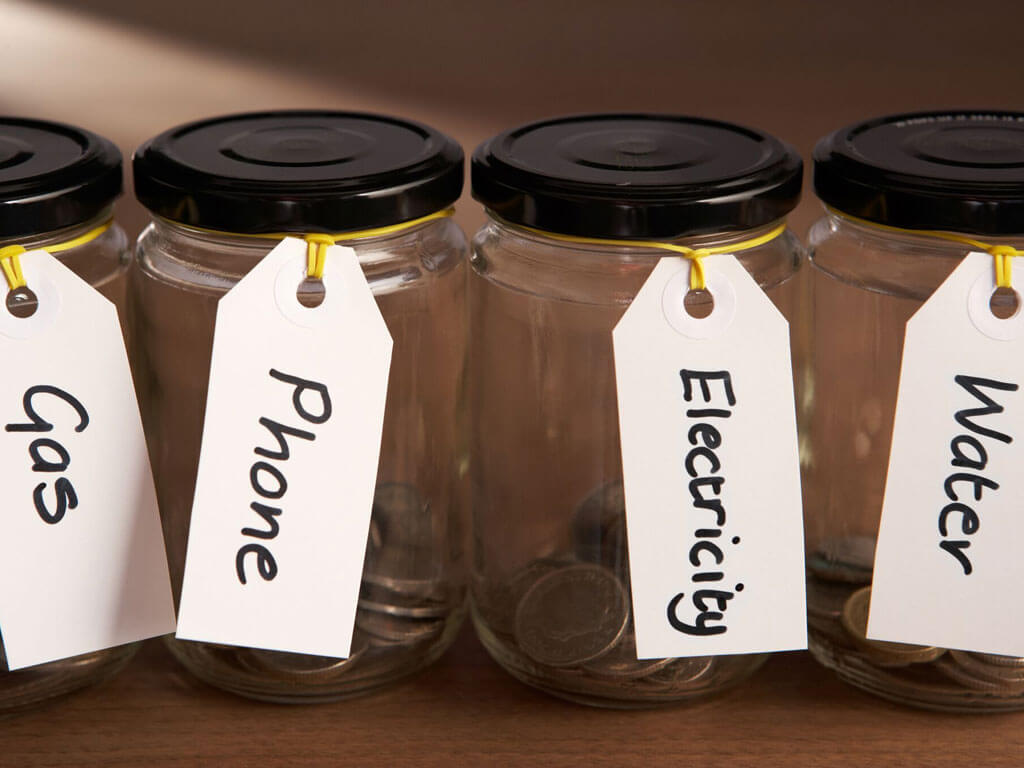In February 2016, ieDigital published a white paper called Bridging the Gap, which outlined the particular collection challenges faced by utility providers, and asked how far digital collection techniques could go towards mitigating them. Water, gas and electricity providers, it proposed, were at a disadvantage compared with lending institutions, thanks to having more enforcement limitations, more vulnerable customers, and lower placement in debtor priority, among other factors.
But while the utilities sector is commonly held to have a tougher job than banking when it comes to collecting overdue payments, the evidence for this (even though it comes from experts) has largely been anecdotal. As such, in this follow-up to Bridging the Gap, we’ve set out to test some of the assertions from our previous paper via extensive consumer research.
In early September 2016, we set out to survey 2,000 UK citizens on their approach to bill payments and debt across utilities and financial services. The results demonstrated not only that utility companies do indeed face a disadvantage compared with lending businesses when it comes to collection activity, but that digital interaction with customers appears to be the best tool they have in overcoming the disadvantage.
The challenge
First things first
Utility companies provide services nobody can live without: heat, light, power and water are basics for human survival. Yet, while one might think this would make utility payments the number one priority for consumers on a limited budget, the reality is of course more complex. In fact, because utility companies provide such vital services, they are much more limited than financial services providers when it comes to enforcement options. Disconnection of electricity or gas is a last resort, while disconnection of household water supply is illegal.
In part because of these limited enforcement options, and in part because utilities debts tend to be smaller than financial services debts (such as those on credit cards), utility suppliers often find themselves at the bottom of the ‘pecking order’, with customers with multiple debts prioritizing those connected with financial products.
We presented our survey respondents with a list of debt types, and asked them to identify which they would pay first if they had limited money – they could tick up to two of them. Figure 1 shows the proportion of the overall tick total each debt class received:
Figure 1: Consumer Debt Priorities
Perhaps unsurprisingly, housing costs, including mortgage and rent payments, were the number one perceived priority for consumers. Interestingly, gas and power debts came a close second, just five percentage points behind. It seems energy providers may not be so far behind financial services when it comes to debtors’ perceptions of priority.
The most striking finding was the massive priority gap between water and other utilities – water debt collected only 6% of respondents’ priority ticks, compared with 30% for gas and power. This would seem to be a clear reflection of the fact consumers perceive there to be less risk in letting water bills go unpaid than in falling behind on gas and power payments.
This may be because of limited water enforcement options for water companies, but it may also simply reflect the smaller ticket size of household water debt. When respondents were asked what percentage of their monthly outgoings went on various bill types (see Figure 2 below), water averaged only 6%, while gas/electricity came in at 11% and mortgage/rent came in at 22%.
Figure 2: Consumer monthly outgoings: Estimated %
While the percentages aren’t an exact match with Figure 1, they seem to show a link between balance size and payment priority.
Of course, it’s worth taking all these findings with a certain amount of pragmatic cynicism. The results came from consumers imagining themselves in a hypothetical situation and reporting what they would likely do if it occurred. Few people in that situation are going to admit that they would prioritize phone, internet or TV payments over water bills. Under real pressure, however, the results may well be different, and indeed they are!
Falling behind
In the next part of the survey, we asked respondents whether they had fallen behind on payments in various debt categories (Figure 3), and if so, how long had it taken them to pay their bills (Figure 4)? Here’s what we found:
Figure 3: Overdue payments by debt type:
Figure 4: Percentage of overdue payers within six months:
Figure 5: Average time taken to pay bills (months).
According to these results, some 9% of respondents said they had fallen behind on electricity bills, an equivalent 9% on gas bills, while 11% had fallen behind on water bills. Only rent, with 13%, had a greater number of late payers than the utilities sector. Interestingly, it was the products involving an asset security – mortgage and motor finance – that took longest for people to pay off, at seven and eight months average respectively. Considering the severity of repossession options attached to these products, these numbers seem surprising.
The longer average payment times may, however, be a result of more advanced forbearance policies in those industries.
What stood out most from these results is the priority assigned to paying communications and entertainment debts: Telephone, TV and internet bills had the smallest number of non-payers, the greatest proportion of settlements within six months, and the lowest average settlement times. These results are at odds with those shown in Figure 1: Consumer debt priorities chart at the start of this report, where telephone, TV and internet debts only made it onto the reported priority payments of 5% of respondents. The divergence is even more striking given the supposed link between smaller ticket sizes and slower repayment. One would expect these debt classes to have appeared at the other end of the table.
Aside from human nature – which one imagines plays a significant role in keeping these bills paid – this discrepancy has two root causes. Firstly, with the services attached to these debts being nonessential, their providers don’t have the same duty to pursue forbearance options as, say, car finance providers – consumers know that if they don’t pay, the car will be removed.
There’s another factor in play, however: Given the intrinsic tech-led nature of entertainment and communications providers, it may simply be that these debts are easier for people to handle rapidly online.
The solution
Taking it online
Heading back to take a closer look at debtor behavior in the utilities sector, our survey showed there is a connection between consumers’ ability to interact with their provider online and their propensity to stay out of debt, and to pay overdue debt early. Let’s take a closer look at the options for bill receipt and payment that consumers reported across water, gas and electricity.
Figure 6: Analog vs digital in water payments:
Figure 7: Analog vs digital in gas payments:
Figure 8: Analog vs digital in electricity:
There’s a clear gradient across the three utility types, with water customers having the lowest level of access to bills online (35%), followed by gas (54%) and electricity (61%). All three utility types had a low proportion of customers paying online – 10% for electricity, and just 8% for gas and water. Now, let’s map these figures against the previous findings on overdue bill payments:
| Utility | % of consumers accessing bills online | % of consumers paying online | % of consumers falling behind on bills | Average time to pay overdue bills (months) | % of overdue bills paid within 6 months |
| Water | 35 | 8 | 11 | 6.57 | 46 |
| Gas | 54 | 8 | 9 | 6.52 | 48 |
| Electricity | 61 | 10 | 9 | 6.23 | 50 |
Looking at the two sets of data together, there is a clear link between customers’ ability to view and pay their bills online, and their probability of either staying out of collections activity, or moving through it rapidly. Obviously, offering the facility to pay bills online doesn’t have a direct impact on collections performance – repayment of overdue debts is an entirely separate process to making monthly payments by direct debit.
There is a clear indirect impact, however: Companies with a more digital mindset overall offer their customers more channels for interaction, and encourage them to transact online on a regular basis. These tendencies then pay dividends when accounts move into collections. When we asked our respondents specific questions on attitudes to collection, the answers further backed this up:
Question: If you fell behind on your payments, would you prefer to work out what you could afford and then make a payment either via the call center, or online?
Question: If you had a choice, what time of the day would be most convenient for you to make a payment if online was an option?
Answers were clear: Nearly three quarters of respondents with a preference on how to assess affordability and pay debts would prefer to do so via an online portal, rather than by speaking to an agent. Equally, more than half of respondents said they would prefer to make payments either before 8am or after 6pm, outside office hours.
Conclusion
The good news for utility providers is that they have lots of room to improve. At present, all three types of providers offer lower levels of online billing and payment functionality than their counterparts in financial services, even for electricity providers, 90% of consumers are either unaware of the ability to pay online, or unable/unwilling to do so.
It seems fair to assume that with a thorough rollout of fully digital, round-the-clock interaction options, customers’ payment behaviour with regard to utilities would move further towards parity with their treatment of financial debts.
By offering an online space in which consumers can interact with their accounts, utility firms can create a starting point for collections conversations, in a way that gives their customers influence over how they are handled. Full digital engagement with customers means utilities providers can not only solve their unique sectoral challenges, but operate with standards in line with those at the leading edge of financial services.
Want to know more?
ieDigital can help your organization deploy a digital self-service platform that gives you the foundations to foster a relationship with your customer and, in time, extend and flex your value proposition. We can also work with you to better understand your customers’ needs and to prototype, test, and try out new concepts and ideas with them.
For more information, please click here to request a chat or demo.














